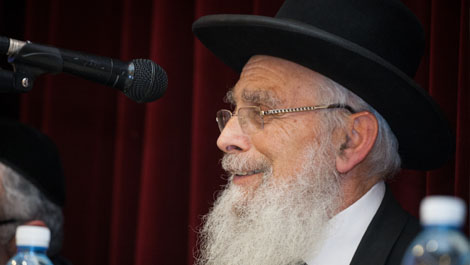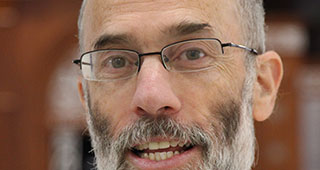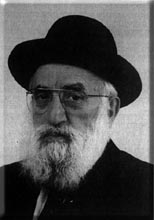Beit Midrash
- Sections
- Chemdat Yamim
- Igrot Hare’aya
Body : … The Rambam does not rule [according to his philosophical explanation in Moreh Nevuchim] as practical halacha. There are other instances in which the reason he gives for a mitzva does not fit the corresponding halacha (e.g., regarding "an eye for an eye," and one who says "His mercy extends to a bird’s nest"). The Rambam posits that in philosophical matters, there is no concept of a formal ruling to follow one opinion; therefore, anyone can take a side in the matter. In contrast, there is a prohibition against straying from the accepted Halacha, [so one must conform to what has been accepted]. This is also the opinion of Chovot Halevavot in his introduction, that the prohibition against arguing on official Rabbinical rulings is only on practical matters, such as blood and blood, law and law (see Devarim 17:8). This follows the Talmud Bavli (Sanhedrin 88), which explains that Torah portion regarding practical matters. The Yerushalmi (Sanhedrin 10:3) relates "a matter" to aggadic matters, i.e., philosophy, so that the prohibition of rejecting Rabbinical rulings also applies to them.
This is the basis for the disagreement among Gaonic scholars, Rav Shrira and Rav Hai, on one side, Rav Shmuel ben Chofni and Rav Sa’adia on the other. Both sides posit words of the living G-d, and disagree along the lines of the Talmud of the West and of the East. The Rambam is like Rav Sa’adia. It is logical that although one cannot argue on a practical matter against a Talmudic conclusion, one may decide on a matter of contemplation according to an opinion that makes more sense to him, if that opinion is based on Torah rules and a Rabbinic opinion, as he explained regarding the reasoning behind mitzvot in general.
Restoration of Sanhedrin – #303

Igrot Hare’aya (200)
Beit Din Eretz Hemda - Gazit
203 - Advice on Studying Spirituality – #301
204 - “Rulings” on Philosophical Matters? – #302
205 - Shemitta Work at Israel National Fund Land – #
Load More
Recipient and Background : Rav Aharon Mendel Cohen (Baharan), who left Eretz Yisrael to become chief rabbi of the Ashkenazim of Cairo. One of his books urges the restoration of the Sanhedrin.
Body : In response to your letter, I must tell you that I do not believe the time is right to make a gathering for the sole purpose of restoring authentic rabbinical ordination. People will not be responsive to this, and critics from various camps will circle in on us, and they might be correct. This generation is tremendously small, intellectually, and lowly in comparison to previous generations, with but a few exceptions. Nothing will awaken more shock and ridicule than to try to initiate something that was done and then rejected (in the 16 th Century), which is much worse than something that never came to fruition.
We should just assemble a large rabbinic convention in the Holy Land, specifically in Yerushalayim, and give it the status of a "congress." In other words, it should come faithfully every 1-3 years. It will focus on all matters of the nation that can be discussed by holy men, who truly love Hashem and His nation. If such a gathering will decide to look toward the ultimate salvation by beginning preparations for removing the impediments to semicha and develop the matter with special writings on the matter, it is possible that along with other things they will accomplish, this would be a major one. In any case, it will not be the first or last matter at the gathering.
If you accept my suggestion, [we should use] your experience with such events, such as your convention in Cracow (1903), which became well known at the time and could have had greater results had it not been interrupted. I will lend my small hand for whatever you want me to do, if it is likely to be spiritually rewarding.

Worse on the Outside, Better on the Inside – #332
Date and Place: 26 Elul 5670 (1910), Yafo
Beit Din Eretz Hemda - Gazit | Sivan 5785

Excitement over a Friend’s New Newspaper – #319
Date and Place: 4 Menachem Av 5670 (1910), Rechovot
Beit Din Eretz Hemda - Gazit | Iyar 5785

Efforts to Buy Land – #315
Date and Place: 28 Sivan 5670 (1910), Yafo
Beit Din Eretz Hemda - Gazit | Iyar 5785

Description of New Yeshiva’s Goals to a Supporter – #328
Date and Place: 12 Elul 5670 (1910), Yafo
Beit Din Eretz Hemda - Gazit | Sivan 5785

Beit Din Eretz Hemda - Gazit

Connecting Disciplines in Torah Study
Igrot Hare’aya – Letters of Rav Kook 103 – part III
Sivan 15 5782

A Commercial Rental for a Closed Business – part II
based on ruling 80047 of the Eretz Hemdah-Gazit Rabbinical Courts
Shvat 1 5782

Limits of Interest Rate for Loan with Heter Iska – part II
based on ruling 80033 of the Eretz Hemdah-Gazit Rabbinical Courts
Sivan 15 5782
























